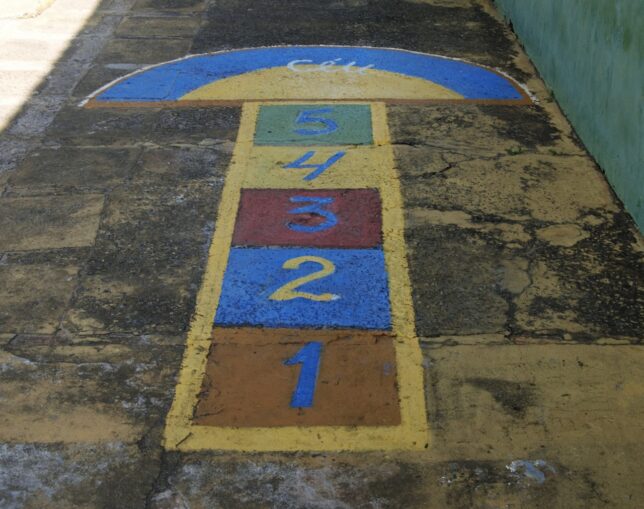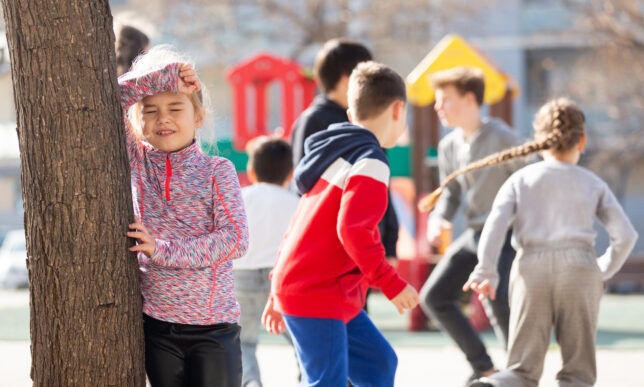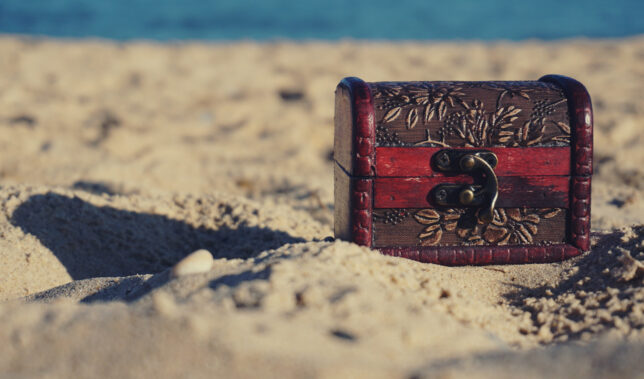As outside temperatures begin to rise, it’s time to get back outside! I love getting out of the house with my kids, and they love it too. There’s nothing like a bit of dirt and fresh air to make your little ones smile from ear to ear. Another bonus is they sleep well afterward, too. But what are the best fun outdoor activities for toddlers?
Just think back to your own childhood and the outdoor things you loved to do. It may be old to you, but it’s brand new to them. One of the best things about having kids is you get to share all the stuff you loved growing up with them.
Games
Want to help make recess super fun? Then teach your kids some schoolyard games.
The concepts of many are easy enough for toddlers to grasp and teach them lots of valuable lessons about sportsmanship, being gentle, and thinking about others. Not to mention math, tactics, social skills, and critical thinking.
Games are best played in groups and are fun for the whole family. So rope in everyone from the household for some outdoor activity time together.
What’s the Time, Mr. Wolf?
The perfect game for teaching and re-inforcing numbers and counting up to 12. It’s pretty exciting and it’s great to teach your kid about time!

How to play:
- One person is chosen to be the wolf and stands with their back to the rest of the group, who line up about 50 paces away.
- The group faces the wolf and shouts in unison, ‘What’s the time, Mr. Wolf?’
- The wolf shouts back a time between 1 o’clock and 12 o’clock, for example, ‘It’s three o’clock!’
- The group steps forward that number of paces towards the wolf.
- They ask again, ‘What’s the time, Mr. Wolf?’
- Again the wolf responds.
- This continues until the person playing the wolf is aware that the group is getting close. He then responds, ‘It’s supper time!’ and chases the group. The first person the wolf catches becomes the new wolf.
- If one of the players reaches the wolf before he can say, ‘It’s supper time!’ That person becomes the new wolf.
If your little one isn’t so steady on their feet, you can change the rules a little: When the Wolf shout’s dinner time, instead of running away, everyone freezes, and the wolf looks for anyone moving.
Also, if you don’t like the association of a wolf and supper time, you can change it to something else, such as funny bunny and tickle time.
Hopscotch
It’s more than just fun but useful to teach letter, color, and number skills too.
A traditional hopscotch grid is drawn with the numbers one through 10, but if you want to teach higher numbers, letters, or colors, you can substitute them instead. Hopscotch is also great for building physical strength, balance, and cognitive retention.
To draw the grid, you’ll need chalk, preferably colored, and a good-sized hard, flat area. There are endless ways to draw a grid, but the most usual method is to use a series of single and double boxes.

How to play:
- Draw the grid. Check that the size of the squares is suitable for your players. They should be no more than three foot lengths high and wide of your smallest player.
- Decide what rules you’re going to use. Traditionally, in hopscotch, a pebble is used for each player to work their way through the grid.
- The idea is that a player must throw the pebble progressively on each number in sequence, without it touching the grid lines or landing on the wrong number. If it does, it’s the next player’s turn.
- Every time the player throws the pebble onto a new number, they must hop their way through the grid in both directions, avoiding the number on which the pebble is resting. On their way back down the grid, they bend and pick the pebble up.
- If they step onto or outside of the lines or put down a hand while hopping, their turn is over. But if they are successful, they throw the pebble again onto the next number and hop through the grid again.
- The first player to get safely to 10 is the winner.
To make the game more of a fun outdoor activity for toddlers, you can try using a small beanbag instead of throwing a pebble. This can be made simply from a child’s sock filled with rice, pasta, or dried lentils.
Alternatively, you can just hop up and down the grid sequentially without throwing anything, or someone can be the caller and shout out a particular number, letter, or color the player must hop to. If the younger players find it too difficult to hop, they can jump with both feet together from one square to the next.
Hide and Seek
To play with younger children, it’s safer to team them up with an adult.
Plus, many young children don’t understand the concept of hiding and often believe so long as they can’t see you, that you can’t see them. Remember when you covered your eyes and believed you were invisible?

Playing hide and seek can develop counting, self-awareness, social, and some basic cognitive skills.
How to play:
- To begin, find a pleasant location. If you don’t have a large yard, a small park is ideal.
- Nominate a seeker, but let your toddler and their appointed adult hide first with the other players.
- The adult should help the toddler choose suitable hiding spots. If they choose badly, the adult can suggest something that might be better and tell them why. Quickly they’ll learn what makes the best hiding places.
- The seeker should count slowly to a specified number out loud, so the hiders can hear them – For example, one to ten in small spaces, or one to twenty in larger ones.
- Once the seeker finishes counting, they call out ‘Coming, ready or not’ to signify to the other players they are now seeking them.
- The first hider the seeker finds becomes the new seeker.
Simple Fun Outdoor Activities for Toddlers
Even the most basic of ball games are lots of fun.
Catch and Soccer
If played with a large and soft ball catch and soccer will teach useful social skills and hand-eye coordination.
Once your toddler is getting better at catching, kicking, and dribbling, you can add counting in too and count how many times each of you catches or passes the ball to each other.
Discovery
All of us had a sense of adventure when we were children, and finding fun activities for toddlers that activate this can be exciting for everyone. It’s great to rediscover your own adventurous side along with your kids.
Treasure Hunts
These are enormous fun and are probably one of my favorite fun outdoor activities for toddlers and older kids.

They’re great to play solo or with family and friends. They teach object recognition, matching, sportsmanship, counting, and co-operation.
How to play:
- There are numerous ways to set up a treasure hunt; you can simply hide items (such as chocolate eggs at Easter) around the yard for your child to find. To make it fair on all the players, tell them how many they’re allowed to collect. Or, encourage their matching skills by giving them a piece of card with pictures of items they need to find on it.
- Supply a suitable bag or container to each player to collect their found items.
- Smaller children might need help in their search, but if they’re more independent, let them play solo.
- The first person (or team) to return with all their items wins.
By the way: A treasure hunt can be played either in or outdoors! So make sure to also add to your repertoire of fun indoor activities!
Build a Fort
This can be just the beginning of a bigger imagination game. A simple fort made from a rope strung between two trees or other solid objects, and a sheet can become anything. A castle, a boat, whatever the imagination desires.
If you want to build something more elaborate, large empty cardboard boxes are great. You can paint them, and cut in windows and doors.
I Spy Adventure Walks
Make a simple family walk into an adventure by incorporating I spy. An adult can help your toddler with their choices. Playing I spy is a great way to teach children about phonics and the beginning of letter recognition and spelling.
If you’ve been living under a rock so far and have no idea how I Spy works, then this video explains it very well 🙂
Super Bubbles
 Kids are fascinated by bubbles. They simply love them. So why not supersize them and make the fun even bigger?
Kids are fascinated by bubbles. They simply love them. So why not supersize them and make the fun even bigger?
All you need to make extra-large bubbles are:
- One gallon of warm water
- One cup of good quality dish soap, such as Dawn
- Three tablespoons of glycerine from your local pharmacy
And here’s the how-to:
- Simply combine the ingredients and stir very slowly and gently with a large spoon or stick. Ensure the mixture is well combined but not too foamy.
- Scoop out a cup or two of the concoction into a large shallow dish.
- Make a bubble wand by bending a wire clothes hanger into a large loop shape.
- If you want to really supersize things, try using a small blow-up pool and a Hula-Hoop for truly monster size bubbles!
Conclusion
You don’t need much equipment or to spend money on toys your kids quickly outgrow to discover the best fun outdoor activities for toddlers. I hope this has helped rekindle some of your own childhood memories.
What are YOUR favorite ways of spending outdoor time with your kids? Did I miss something? If you have anything to add or would like to share how my tips above worked for you, please make sure to leave a comment below. Also, if you know ANYONE who you think would love to read this article, please share it with them! As always: Sharing is caring 🙂
All that’s left to do now, is get outdoors and have some fun!
All the best,
chris
P.S.: If you REALLY want to level up your parenting skills and get rid of all the power struggles that can stand between our kids and us as moms or dads, then make sure to read my FULL REVIEW of “Positive Parenting Solutions” HERE.

